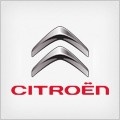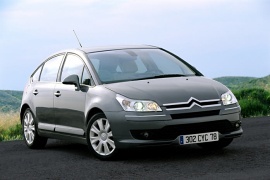
CITROEN C4 Hatchback
Generations Timeline, Specs and Pictures

At the 2010 Paris Motor Show, Citroen unveiled the second generation of its compact hatchback, the C4.
It was based on the same platform as the Peugeot 307, but it more than just a badge-engineering.
While its predecessor tried to push the design boundaries as far as possible and failed to convince too many buyers, the second generation came with a more conservative design. It still kept the rounded shape, but with a two-box design.
The front grille was formed by the “double-chevron” Citroen logo, extended to the sides with chromed lines. The angular and aggressive headlights featured lowered installed turn signals. The sculptured door panels featured both a lower and an upper line to make the car look longer.
Inside, there was a completely new design approach when compared with its predecessor. Unlike the previous C4, it didn’t feature a center-mounted instrument cluster but a more conventional in front of the driver one. The basic versions featured only a few options, but it still offered a stereo and air conditioning plus front power-windows. There was the option of a premium Denon HiFi audio system.
The 2010 C4 was powered by an extensive range of powerplants - three BMW co-developed petrol engines and four efficient HDi diesel units. Power output ranged from a 90hp to a punchy 155hp. Automatic, 5-speed manual, 6-speed manual and 6-speed EGS transmissions were all available. A micro-hybrid e-HDi drivetrain was available with the Hdi 110 engine and the EGS (automated) gearbox.

Citroen always tried to make cars different than anyone else, and sometimes it managed to offer something completely different than its competitors.
After four years on the market, the first generation of the C4 was not explosive, but its sales were good. In 2008, the French carmaker had to update its engine lineup to comply with the Euro5 standards, which became mandatory in January 2009. Along with that improvement, Citroen considered that it would be wise to upgrade the rest of the car as well.
The front side featured a curvier hood and a different bumper design that incorporated a broader grille on the lower side from the outside. Its “double-chevron” badge followed the same design pattern from its bigger brother, the C5, with longer chromed lines that spread between the headlights. Citroen changed the lights both front and back and installed clear-lenses on them.
Inside, the most important change was for the infotainment system, which was available as an option with a new screen installed on the center stack. The carmaker improved the interior materials used for the door panels, seats, and dashboard. It kept the same steering wheel as before, with the fixed center-mounted buttons.
Citroen worked closely with BMW for the engine lineup and developed the turbocharged 1.6-liter gasoline and the 1.6-liter turbo-diesel unit. These were offered in a few power options. The other two versions, a 1.4-liter gasoline and a 2.0-liter turbo-diesel, were developed in-house.

Citroen went back to its ideas to make cars differently than anyone else and introduced the C4 hatchback in 2004 with some unique features and design language.
While the Xsara was a suitable vehicle, it wasn’t that much different than other cars on the market. Its styling war rather bland than daring, and its interior had nothing unusual for its segment.
The car’s rounded design made it look bigger than it was. Its shape was unique on the market, with a rounded and extended profile that ended into a curved rear end. At the front, the C4 featured boomerang-type headlights. Its hood was adorned with a wide, chromed decoration with the “double-chevron” badge in the middle. Two chromed lines marked the bounders between the grille and the bumper, which sported a center grille at the bottom and the fog lights on the outer side. Citroen installed the taillights high on the C-pillars at the back, protecting them from small parking bumps.
Inside, the C4 was completely different than any other car on the market. The steering wheel hub was fixed and sported several buttons for the audio system and the onboard computer. On the wide and long dashboard, the carmaker installed the speedometer in the middle, in a digital instrument cluster. The tachometer was mounted in front of the driver, behind the steering wheel, in an LCD. Depending on the trim level and options, a navigation system took most part of the center stack. Another unique feature was the perfume dispenser integrated into the ventilation system, so no more trees hanging on the rear-view mirror.
Under the hood, Citroen installed a wide choice of engines, either gasoline or turbo-diesel.























































